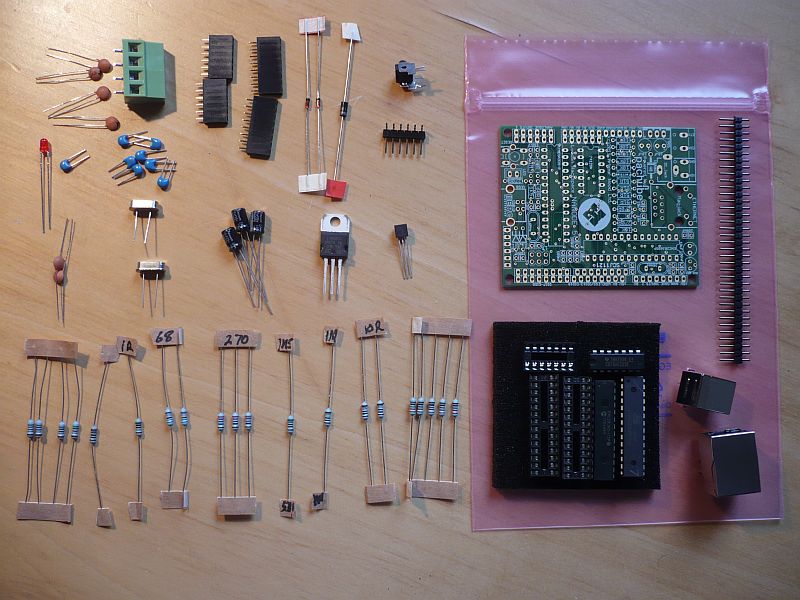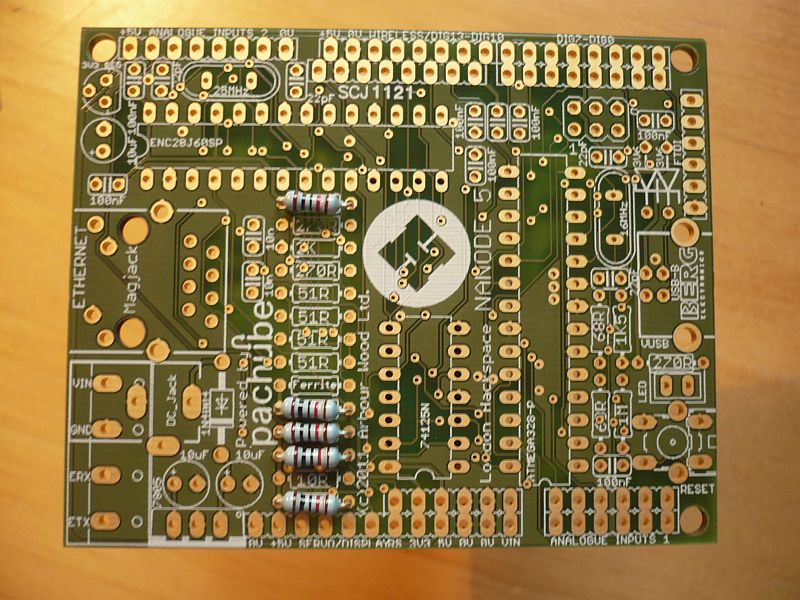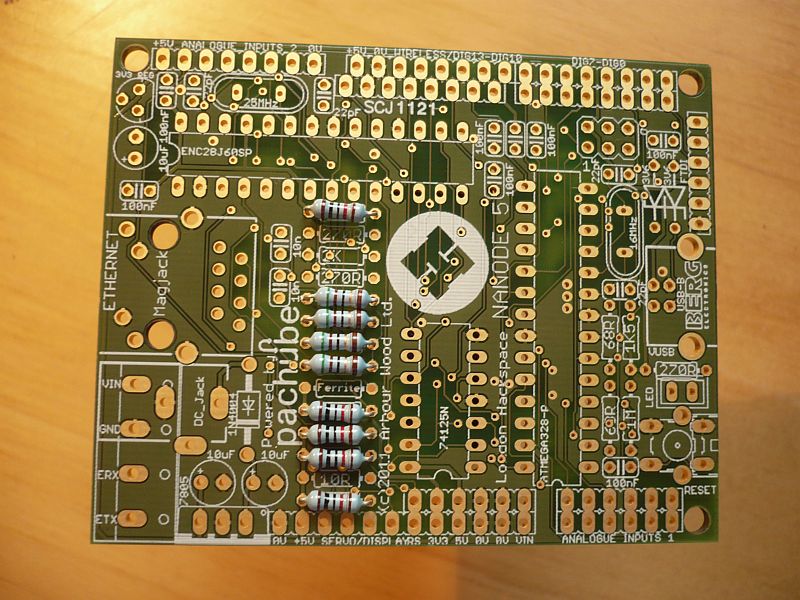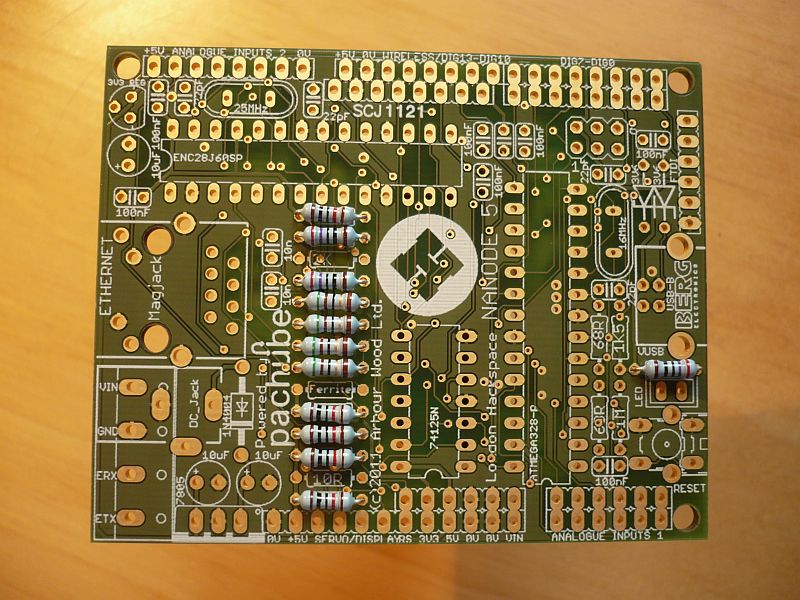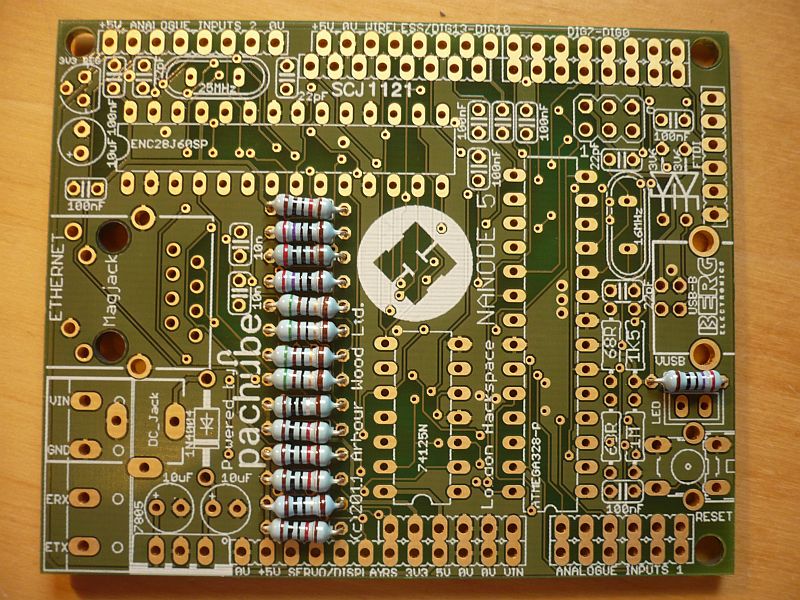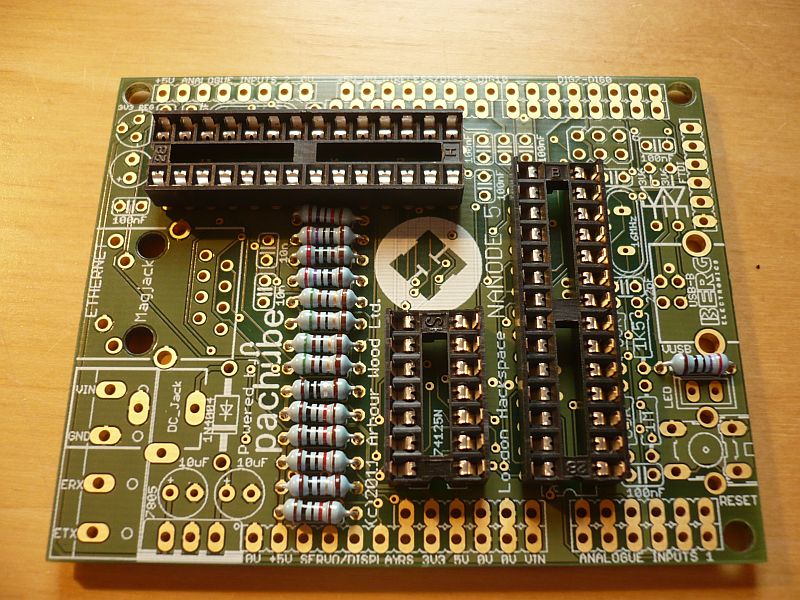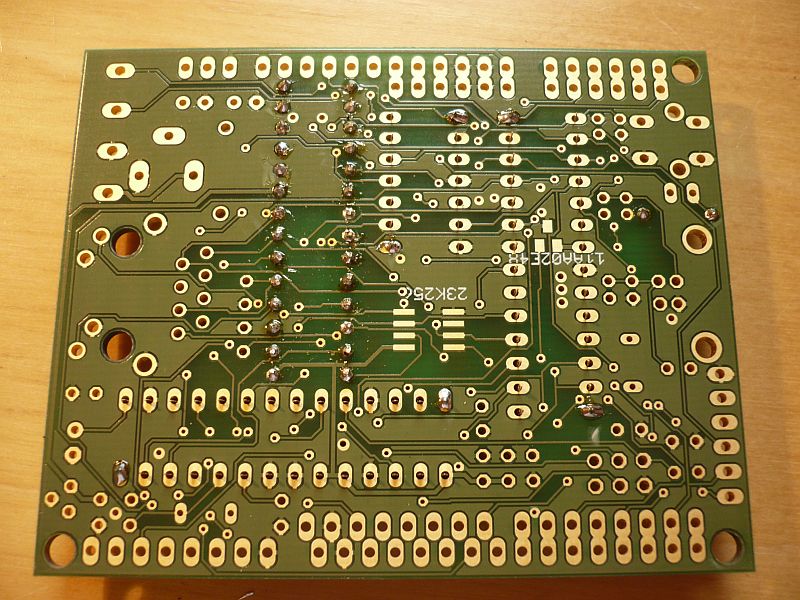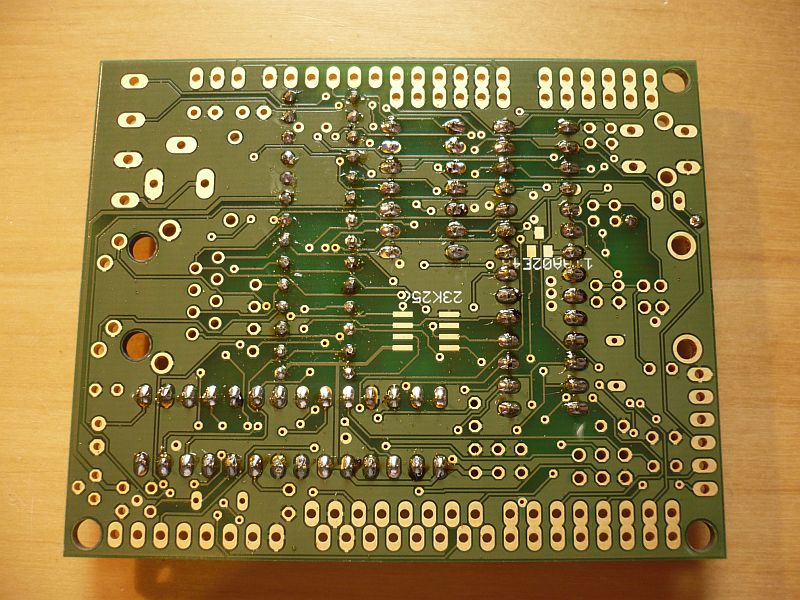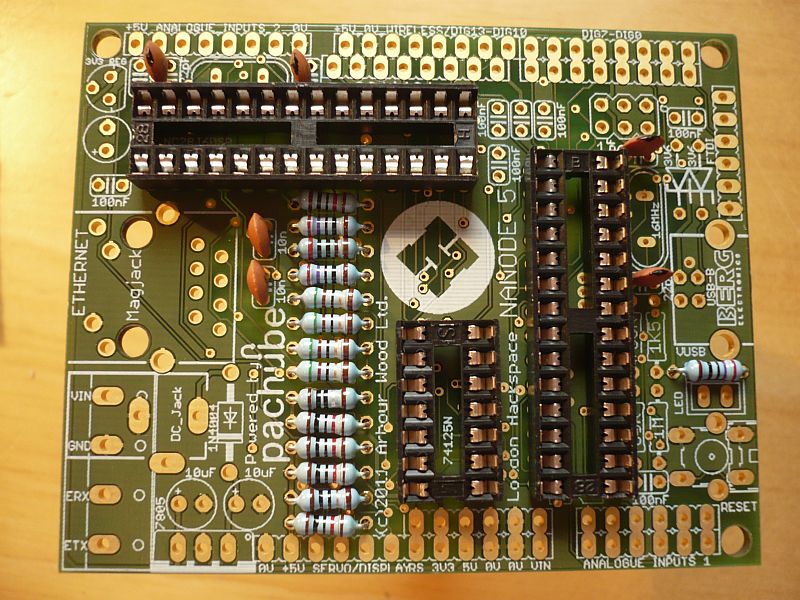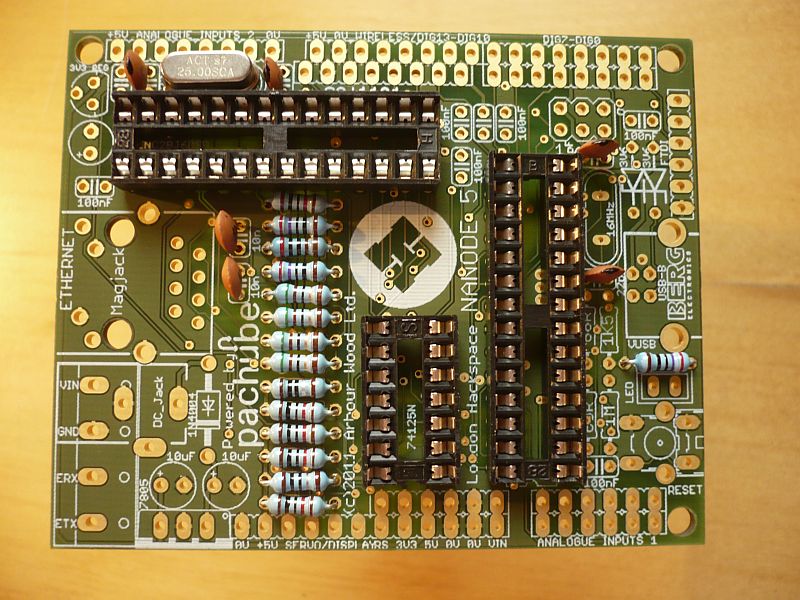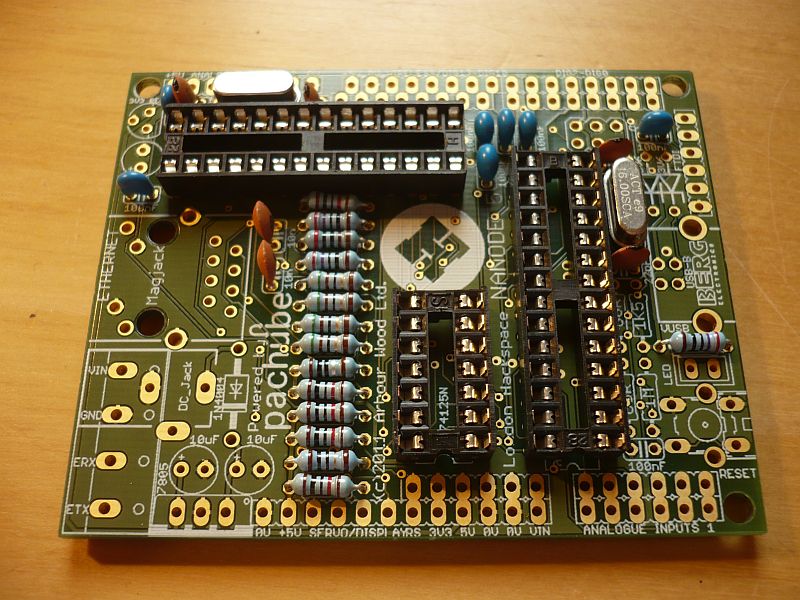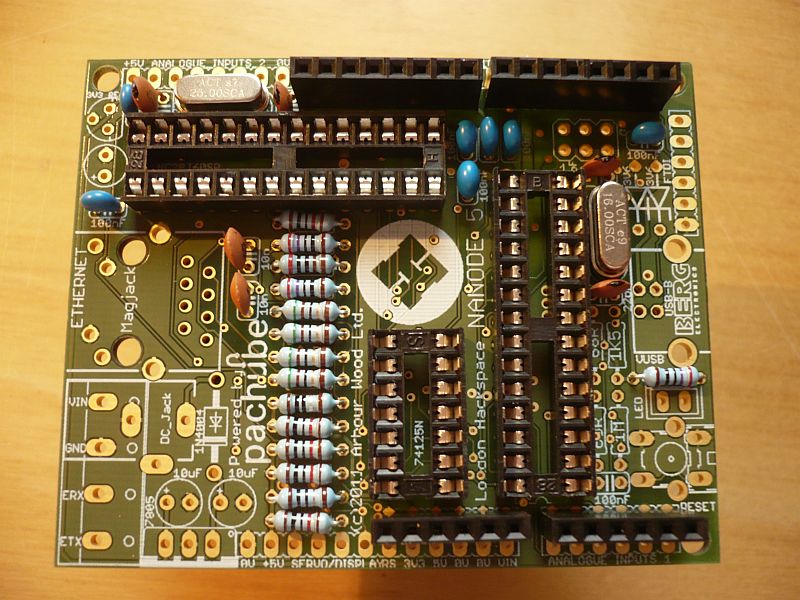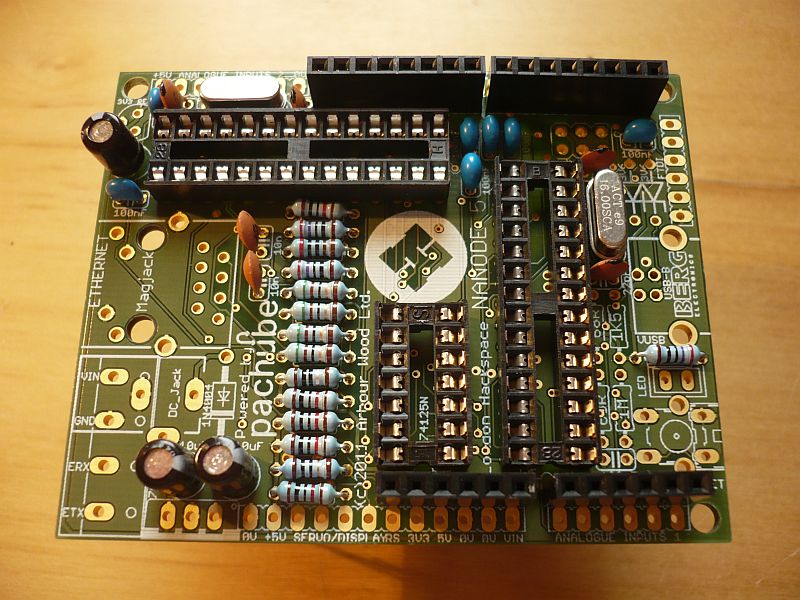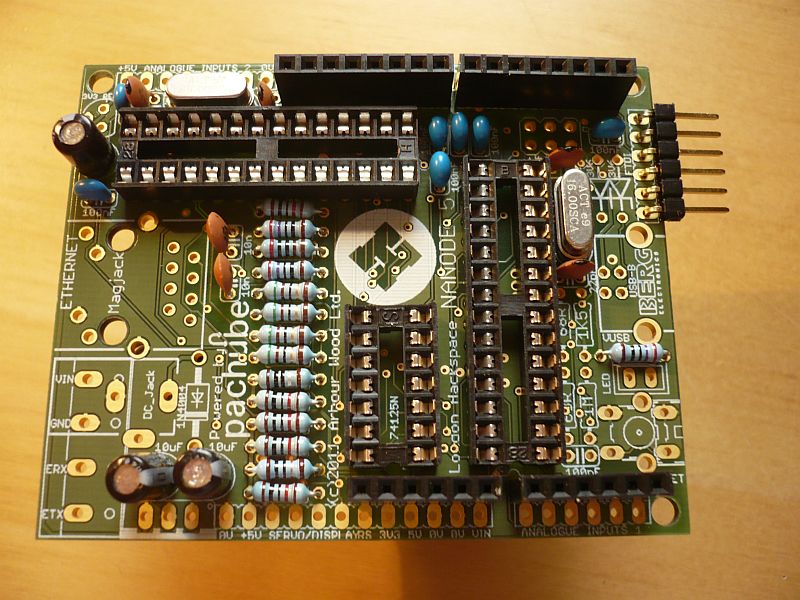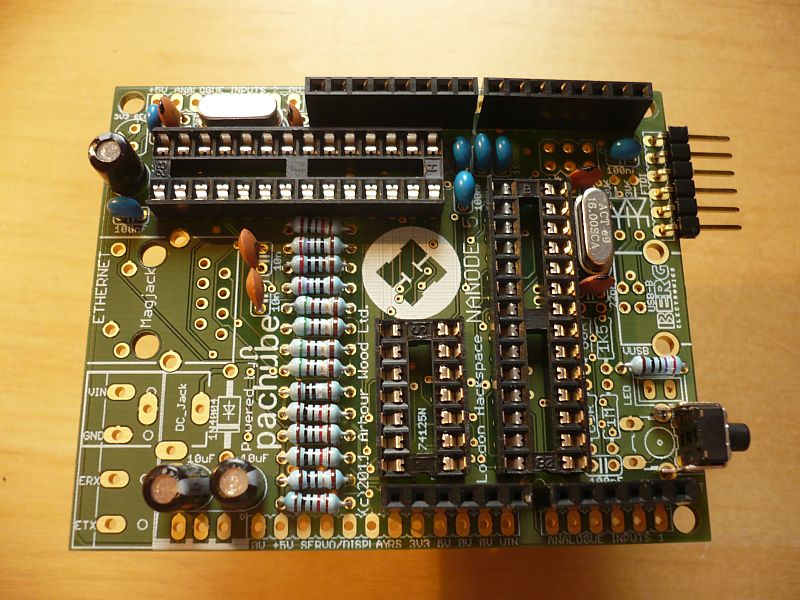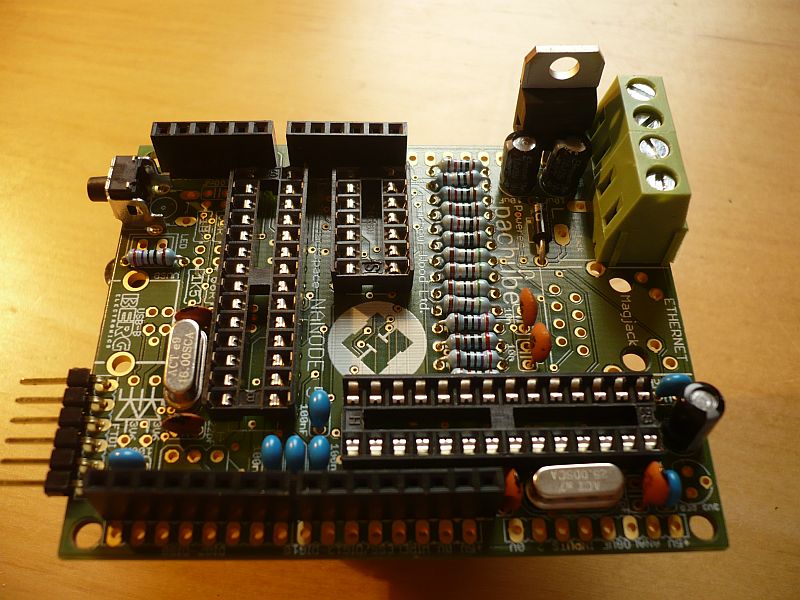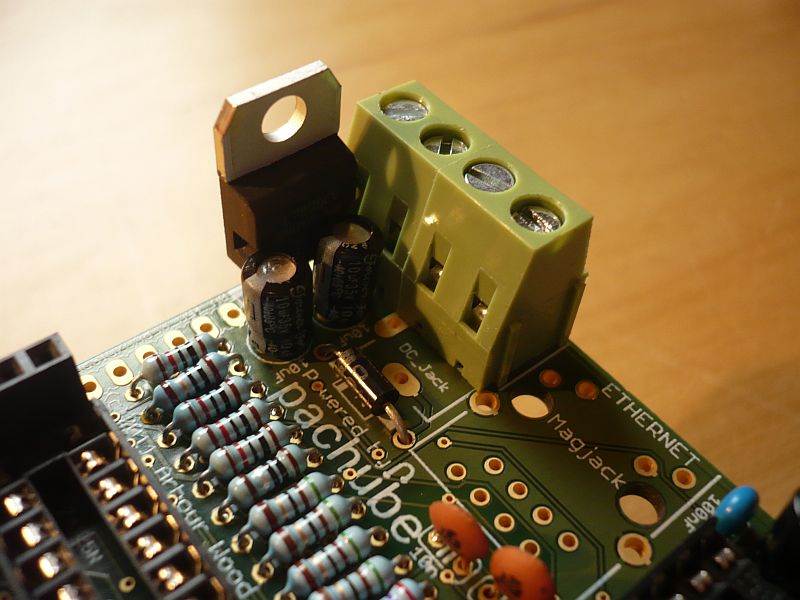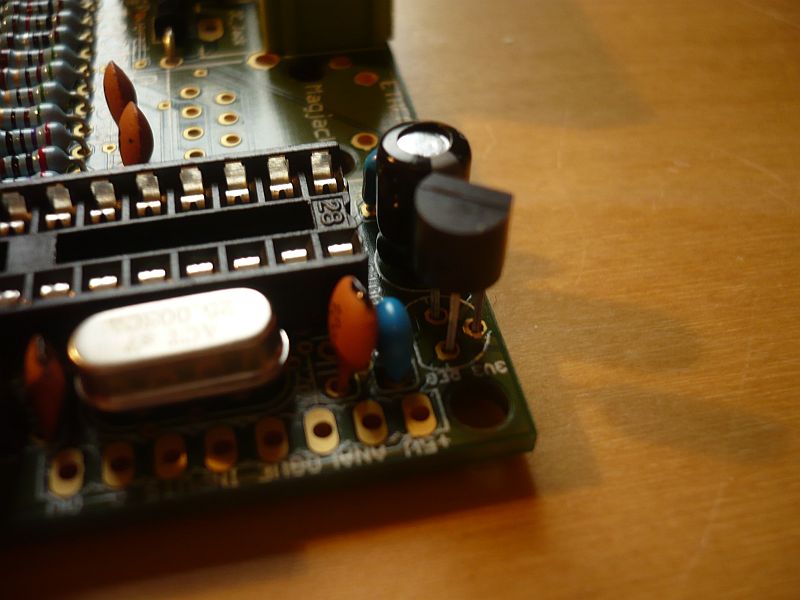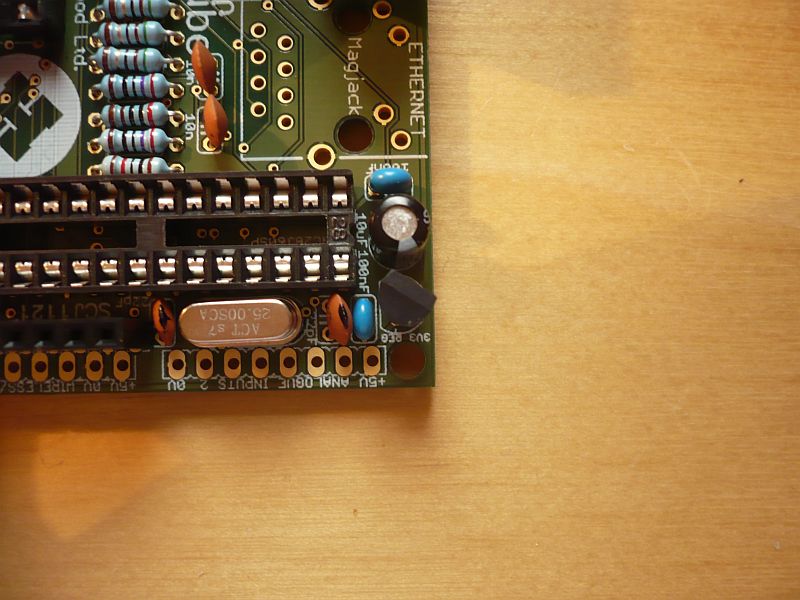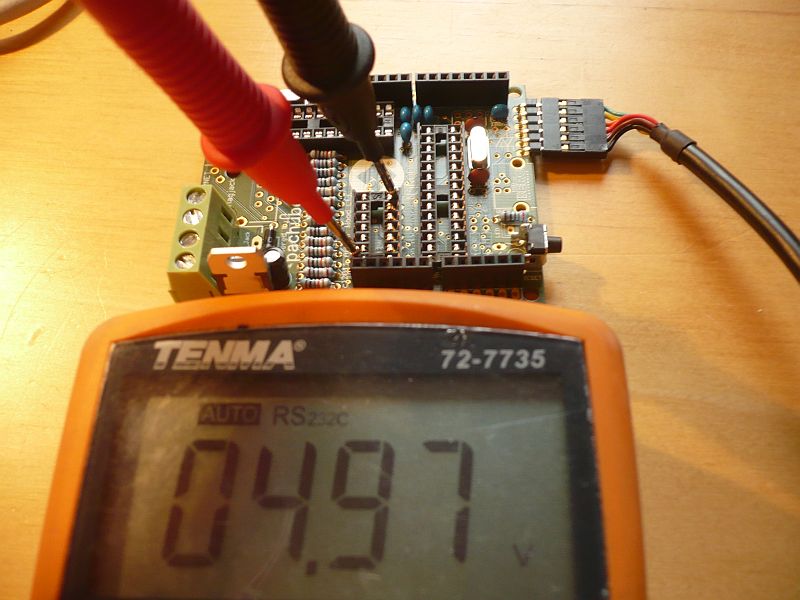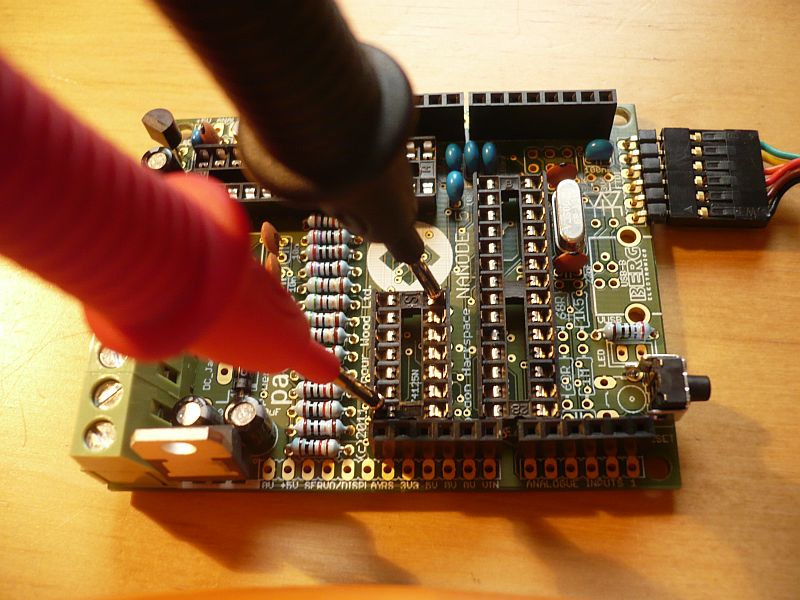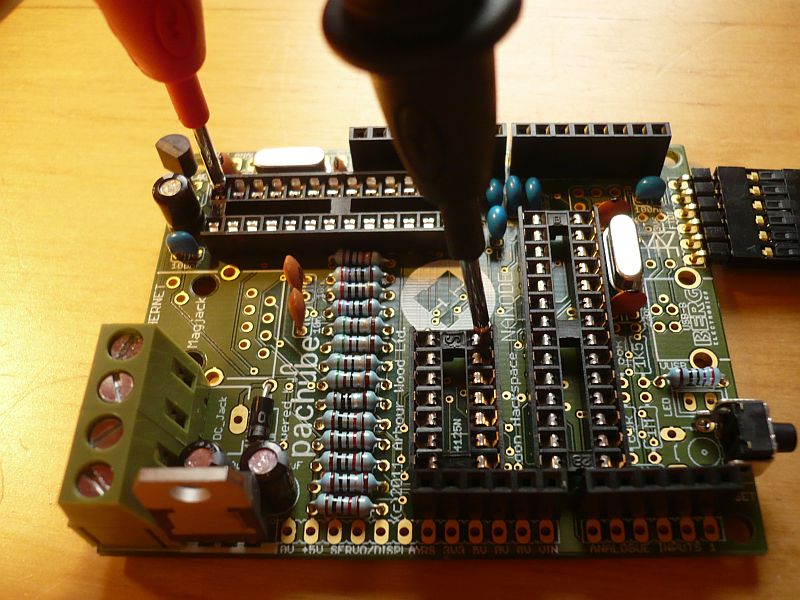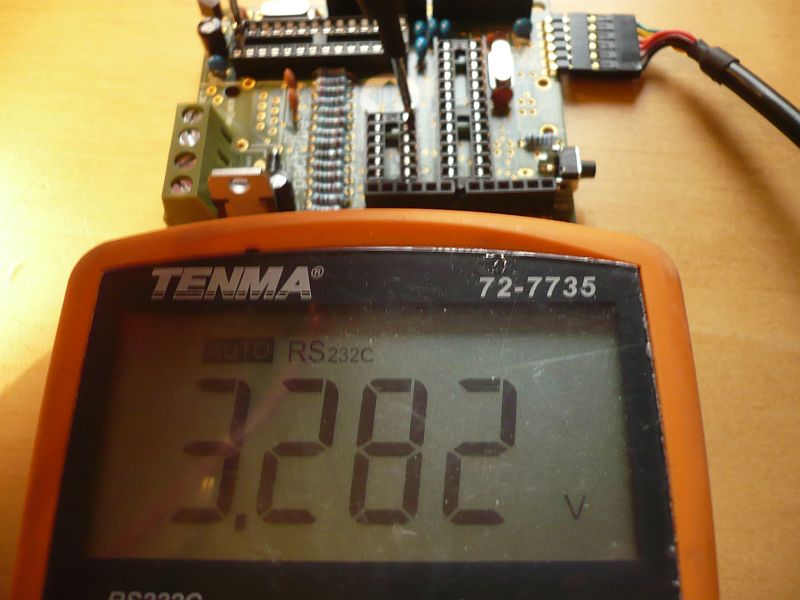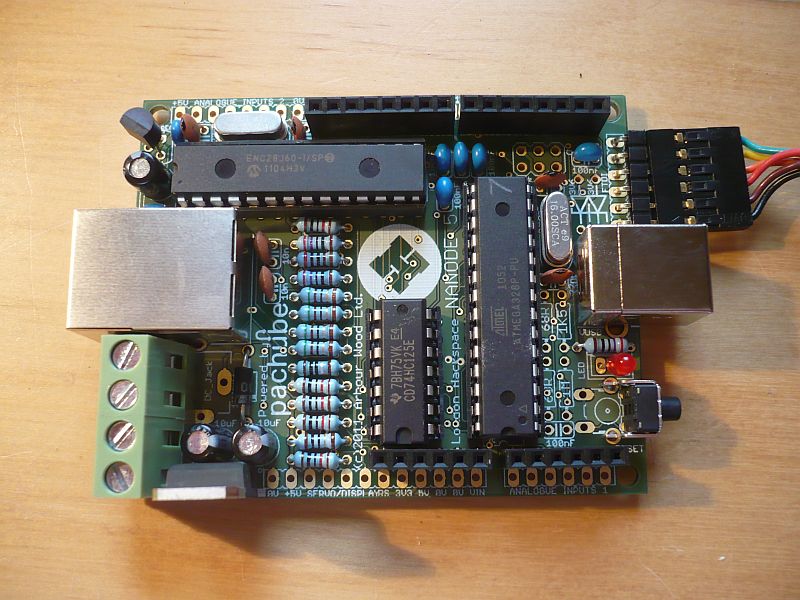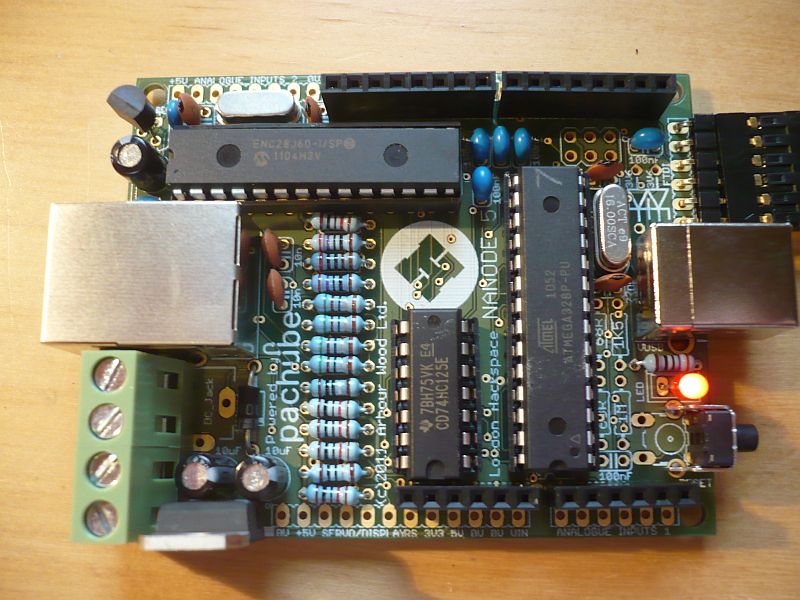Project:Nanode/Building a Nanode: Difference between revisions
| Line 144: | Line 144: | ||
==Step 20== | ==Step 20== | ||
Now we test the board to make sure that the 5V and 3V3 power supply rails are working OK. | Now we test the board to make sure that the 5V and 3V3 power supply rails are working OK. We do this before we insert any of the ICs (as more than 60% of the kit value is in the ICs). | ||
Put the positive probe on pin 14 of the 14 way IC socket and the negative probe on pin 7 of the same socket. | |||
Insert the FTDI cable with its black wire closest to the centre of the pcb. Look for a voltage close to 5.00V. | |||
To measure the 3V3, keep the black meter lead on pin 7 of the 14 pin socket and put the red meter probe on pin 28 of the far 28 pin socket as shown. Look for a voltage close to 3.3V | |||
[[File:test_5V.jpg|800px|center|thumb|Measure the 5V like this!]] | [[File:test_5V.jpg|800px|center|thumb|Measure the 5V like this!]] | ||
| Line 153: | Line 159: | ||
[[File:testing_3V3_2.jpg|800px|center|thumb|Measure the 3V3 like this!]] | [[File:testing_3V3_2.jpg|800px|center|thumb|Measure the 3V3 like this!]] | ||
==Step 21== | ==Step 21== | ||
Revision as of 06:38, 2 June 2011
Building a Nanode - in Words and Pictures
Here's how to build up a Nanode as a step by step guide. It should take you a couple of hours.
Step 1
First identify the kit contents
Here you see all the resistors, capacitors, connectors, crystals and ICs needed to make the standard build of Nanode 5.
Step 2
Now orientate the board so that the writing is positioned like this.
This is the basic starting point for the build sequence. The pcb is built in an orderly sequence starting with the resistors and small components that are low on the board and then working up to the bulkier parts like connectors.
Step 3
First we add the five 10K resistors - the colour code is Brown Black Black Red (The last band on all resistors is Brown).
Step 4
Now we add the four 51R resistors - the colour code is Green Brown Black Gold (The last band on all resistors is Brown).
Step 5
Now we add the three 220R resistors - the colour code is Red Purple Black Black (The last band on the right on all resistors is Brown).
Step 6
The remaining 1R, 10R and 2K resistors are added.
1R has the colour code is Brown Black Black Silver and is fitted in the position marked "ferrite".
10R is Brown Black Black Gold,
2K is Red Black Black Brown
Note - we will not be fitting the two 68R resistors, the 1K5 and the 1M on the right hand side near the USB socket - these are a later virtual USB option - retain them in the kit to be fitted when the software for this option is released.
Step 7
Add the IC sockets making sure that the pin 1 "notch" lines up with the notch in the symbol on the pcb.
It's best to tack diagonally opposite corners to hold the socket in place whilst the rest of the pins are soldered. Make sure they are fitted flat on to the board.
Step 8
Add the four 22pF capacitors marked 22, and the two 10nF capacitors marked 103
Step 9
Add the 25MHz crystal marked 25.00SCA
Step 10
Add the 16MHz crystal marked 16.00SCA
Step 11
Add the seven 100nF capacitors, colour blue marked 104. There is a spare location for a 100nF capacitor next to pin 1 of the ATmega328 IC. Do not fit any component in this location - just the seven in the picture.
Step 12
Here is the board so far - more than half way.
Step 13
Solder in the "shield" connectors. There are 2 x 6 way and 2 x 8 way SIL sockets. Make sure you get them in the inner lines of holes and that they are fitted straight and vertical. Best to tack one end pin whilst you hold them straight - check the alignment then solder the remaining pins in place.
Step 14
Add the three 10uF electrolytic capacitors - noting that the longer lead is the positive which lines up with the + label on the pcb. You can also confirm the orientation by looking at the position of the white strive (-ve) in the photograph.
Step 15
Add the FTDI header - a 6 way right angled header on the right hand side of the pcb. Make sure it is straight and level.
Step 16
Fit the right angled reset switch
Step 17
Add the 5V regulator as shown and the 4 way screw terminal block. You need to assemble the two 2 way terminal blocks to make a 4 way - BEFORE you solder to the pcb.
Step 18
Fit the 1N4001 protection diode as shown - noting that the banded end lines up with the band on the pcb legend
Step 19
Now - the tricky part. The 3V3 regulator needs to be fitted in a certain way - but not like the pcb symbol. Copy the orientation as in the next 2 pictures.
Step 20
Now we test the board to make sure that the 5V and 3V3 power supply rails are working OK. We do this before we insert any of the ICs (as more than 60% of the kit value is in the ICs).
Put the positive probe on pin 14 of the 14 way IC socket and the negative probe on pin 7 of the same socket.
Insert the FTDI cable with its black wire closest to the centre of the pcb. Look for a voltage close to 5.00V.
To measure the 3V3, keep the black meter lead on pin 7 of the 14 pin socket and put the red meter probe on pin 28 of the far 28 pin socket as shown. Look for a voltage close to 3.3V
Step 21
If the voltage tests check out - we can fit the remaining parts - the Mag-jack connector, the USB connector and the Red LED
Step 22
The ICs can be added - making sure you have the correct orientation
